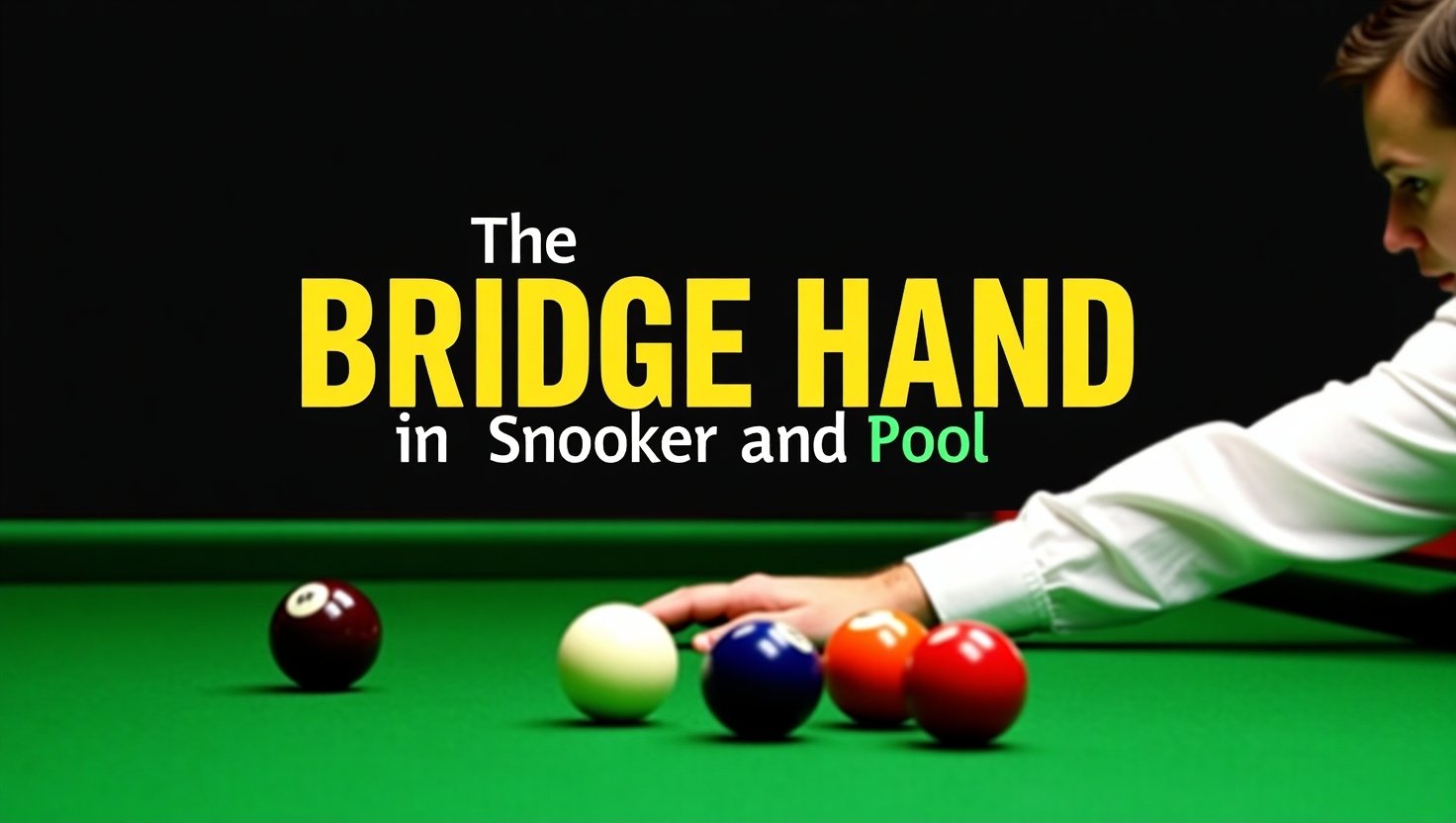The bridge hand is essential for creating a solid and stable base for your cue, allowing it to glide smoothly along the shot line. This guide will explore the different types of bridge hands and provide tips on how to use them effectively in snooker and pool.
1. The Purpose of the Bridge Hand
Sub-Heading: Creating a Stable Base: The bridge hand’s primary purpose is to provide a stable base for the cue. It needs to be on the shot line, and the part guiding the cue should also be aligned with the shot line.
Example: Place your bridge hand far enough away from the ball to allow a full backswing, yet close enough to follow through effectively. The distance should be balanced to ensure both a full backswing and a complete follow-through.
2. Types of Bridge Hands
Sub-Heading: Open Bridge: The open bridge, commonly used in British pool, involves creating a V-shape with your thumb and first finger. Spread your fingers out to provide a solid base, and pull your thumb into your hand to create the V.
Example: Adjust the height of the cue by flattening or raising your fingers. Keep the fleshy part of your hand firmly on the table for stability.
Sub-Heading: Closed Bridge: The closed bridge, often seen in American pool, involves wrapping your finger around the cue. This technique is more suitable for cues with a thicker shaft and less taper.
Example: Wrap your finger around the cue and into your thumb for a snug fit. This method provides better control, especially with thicker American cues.
3. Adjusting the Bridge Hand for Different Shots
Sub-Heading: Raising the Bridge Hand: When you need to bridge over another ball, lift the back of your hand to raise the cue.
Example: Tuck your middle fingers in for better stability when lifting your hand. This technique ensures a solid base even when bridging over obstacles.
Sub-Heading: Edge of the Table: When space is limited, use the edge of the table to create a stable bridge. This involves forming a bridge that allows the cue to run along the table’s edge.
Example: Use the back of your thumb and second finger to guide the cue along the table edge. This technique provides better control in tight spaces.
4. Bridging Over Balls and Queuing Along the Rail
Sub-Heading: High Bridge for Elevation: Sometimes, you need to get higher over the ball. Use a high bridge to achieve the necessary height.
Example: Balance on your two outer fingers and lift the back of your hand for stability. This allows you to bridge over obstacles while maintaining control.
Sub-Heading: Rail Bridge: When the cue ball is close to the side cushion, use a rail bridge for stability.
Example: Wrap a couple of fingers down onto the table and form a V with the remaining fingers. This allows for accurate cueing along the rail.
Conclusion:
Mastering the bridge hand is crucial for improving your snooker and pool game. By understanding the purpose of the bridge hand, practicing different types of bridge hands, and adjusting for various shots, you can achieve better control and precision in your play.
FAQs:
What is the primary purpose of the bridge hand?
The bridge hand provides a stable base for the cue, allowing smooth and controlled shots along the shot line.
How do I choose between an open and closed bridge?
The choice depends on the type of cue you use. British cues typically suit an open bridge, while American cues work well with a closed bridge.
How can I adjust my bridge hand for different shots? Raise the back of your hand to bridge over obstacles, and tuck your fingers for better stability when needed.
What should I do when space is limited for my bridge hand?
Use the edge of the table or create a high bridge to maintain control and stability in tight spaces.
Why is it important to keep the cue low when using a bridge hand?
Keeping the cue low ensures that you are cueing through the ball rather than down on it, providing better accuracy and control.

